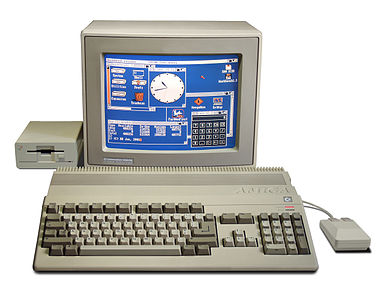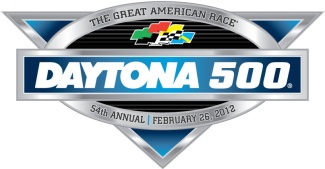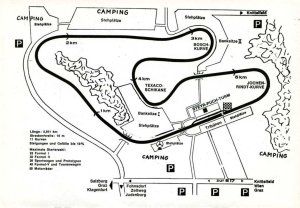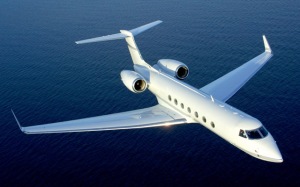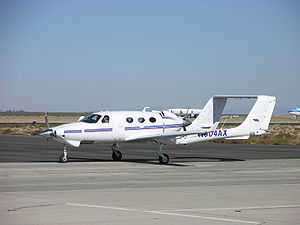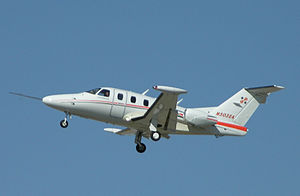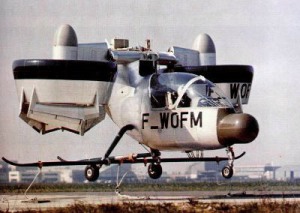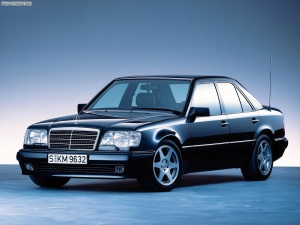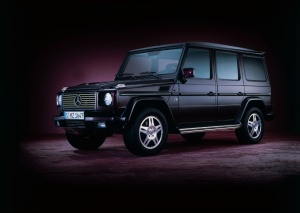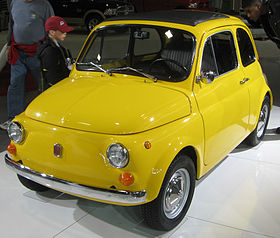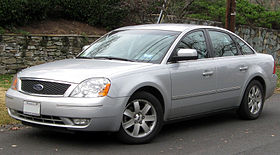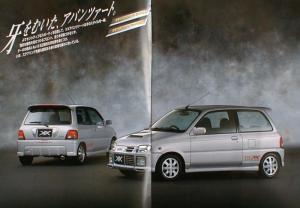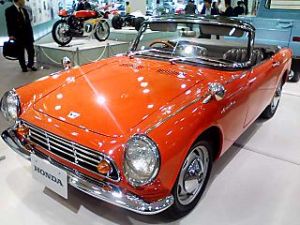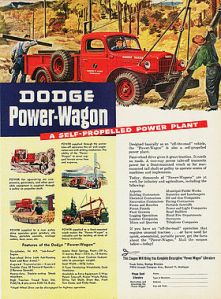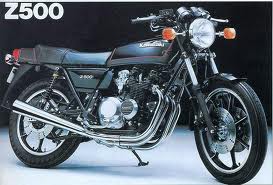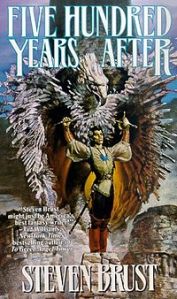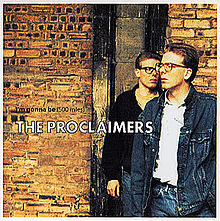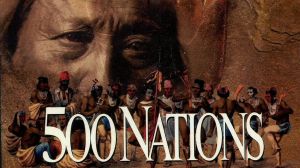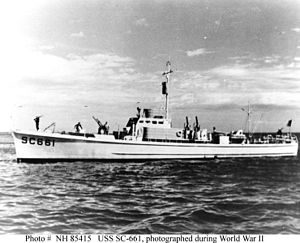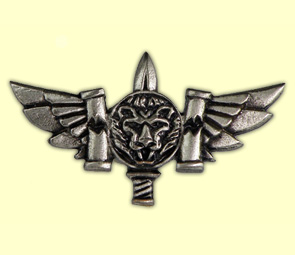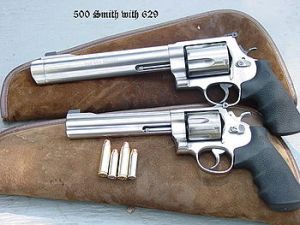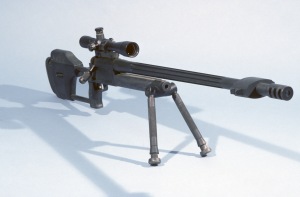“Fight Against Stupidity And Bureaucracy”
.
It’s significant number factoid Friday and that’s not all.
Today also happens to be my 500th post – so the WordPress people tell me.
I usually let these milestones pass by unnoticed, but today rather than a randomly selected number what else can it be but post about the number 500.
So get some coffee and strap yourselves in, this might be a long one!
.
.
The number 500
.
In religion
- 500 only appears one time in the Bible, in 1 Chronicles 4:42, “And some of them, even of the sons of Simeon, five hundred men, went to mount Seir, having for their captains Pelatiah, and Neariah, and Rephaiah, and Uzziel, the sons of Ishi.” Authorized (King James) Version (AKJV)
.
.
.
In mathematics & computing
- 500 is a Harshad number, also called a Niven number, which means that it is an integer that is divisible by the sum of it’s digits. Examples include 10, 21, 30, 42, 54, 63, 100 and, of course, 500. Harshad numbers were defined by D. R. Kaprekar, a mathematician from India.
.
- 500 is an HTTP status code for Internal Server Error
- 500 is also an SMTP status code meaning a syntax error has occurred due to unrecognized command
.
- X.500
- X.500 is a series of computer networking standards covering electronic directory services. The X.500 series was developed by ITU-T, formerly known as CCITT, and first approved in 1988. The directory services were developed in order to support the requirements of X.400 electronic mail exchange and name lookup. ISO was a partner in developing the standards, incorporating them into the Open Systems Interconnection suite of protocols. ISO/IEC 9594 is the corresponding ISO identification
.
- Amiga 500
- The Amiga 500 – also known as the A500 (or its code name “Rock Lobster”) – was the first “low-end” Commodore Amiga 16/32-bit multimedia home/personal computer designed to compete directly against the Atari 520ST.
- The Amiga 500 represented a return to Commodore’s roots by being sold in the same mass retail outlets as the Commodore 64 – to which it was a spiritual successor – as opposed to the computer-store-only Amiga 1000.
- The original Amiga 500 proved to be Commodore’s best-selling Amiga model, enjoying particular success in Europe. Although popular with hobbyists, arguably its most widespread use was as a gaming machine, where its advanced graphics and sound for the time were of significant benefit.
.
.
.
In science
- Fe500 steel
- The reinforcement steel bars used extensively in construction projects in RCC (Reinforced Cement Concrete) are designated as Fe415 or Fe500 depending on their Yield Strength.
- Fe500 steel means the reinforcement steel rods (or bars) that can safely withstand an Yield Stress of 500 N/mm2.
.
.
.
In space
- V500 Aquilae
- The V500 Aquilae or Nova Aquilae 1943 was a nova which appeared in the constellation Aquila in 1943 and reached a brightness of 6.1 mag. Its brightness decreased in 30 days around 3 mag.
.
.
.
In politics
- 500 Days Program
- The 500 Days Program was an ambitious program to overcome the economic crisis in the Soviet Union by means of transition into market economy.
- The program was proposed by Grigory Yavlinsky and further developed by a work group under the direction of Stanislav Shatalin (an economic advisor to Mikhail Gorbachev). Before beginning work on the project, Shatalin had been assured by Gorbachev that he was serious about radically reforming the Soviet economy.
- Therefore, in August 1990, the group issued a 400-page report titled “Transition to the Market”. It was based on the earlier “400 Days Project” prepared by Yavlinsky and became known colloquially as the “500 Days Program” as it intended to create the groundwork for a modern market economy in 500 days.
- The report called for creation of a competitive market economy, mass privatization, prices determined by the market, integration with the world economic system, a large transfer of power from the Union government to the Republics, and many other radical reforms.
- The 500 Days Program immediately gained the complete support of Boris Yeltsin and a more skeptical support from Mikhail Gorbachev; soon after, Nikolai Ryzhkov, the Chairman of the Council of Ministers, openly repudiated it.
- The Supreme Soviet of the Soviet Union delayed in adopting the program, eventually accepting a more moderate program for economic reform, titled: “Basic Guidelines for Stabilization of the Economy and Transition to a Market Economy”. The new program contained many measures from the 500-Days Program, but most notably lacked a timetable and didn’t mention the division of economic power between the Union and Republics.
.
.
.
In sport
- NASCAR
- Many NASCAR races often use the number 500 at the end of their race names, for example, the Daytona 500, to denote the length of the race (in miles, kilometers or laps).
- The longest advertised distance (in miles) of the IndyCar Series and its premier race, is the Indianapolis 500.
- The winning ‘per millage’ of a sports team with equal numbers of wins and losses. Such teams are often referred to as “500 teams”.
.
- Race of Two Worlds
- The Race of Two Worlds, also known as the 500 Miglia di Monza (500 Miles of Monza), was an automobile race held at the Autodromo Nazionale Monza, Italy in 1957 and again in 1958.
- It was intended as an exhibition event, allowing American teams from the United States Auto Club (USAC) National Championship to compete directly against teams from the Formula One World Championship based in Europe. The two types of cars competed on the banked oval at Monza which had been completed in 1955. Due to the similarity to the Indianapolis Motor Speedway, where the USAC teams ran the Indianapolis 500, the event earned the nickname Monzanapolis.
- American drivers and teams won the event in both the years in which it was run, Jimmy Bryan in 1957 and Jim Rathmann swept in 1958.
- Although some Formula One teams did participate and even build special cars specifically for the event, several withdrew over safety concerns. Continued concern over the speeds on the track and the cost of the event led to the race being canceled after the 1958 running.
.
- 1000 km Zeltweg
- The 1000 km Zeltweg, originally known as the 500 km Zeltweg, was an endurance sports car event held near Zeltweg, Austria.
- Originally based at the Zeltweg Airfield, the race moved to the Österreichring where it continued to be a regular event in the World Sportscar Championship.
.
- Formula 500 (F500)
- Formula 500 (F500) is a Sports Car Club of America (SCCA) and Midwestern Council of Sports Car Clubs (MCSCC) open wheel road racing class.
- Formula 500 was originally introduced in the early 1980s as Formula 440 (F440) and is a spec class in the sense that the engine, drivetrain, and shock absorbers are all tightly regulated, but the chassis, bodywork and other car parts are free for designers to experiment with within dimensional and structural limits. These regulations allow for very competitive racing at a relatively low cost which rewards driver and car set-up skill.
- The 500 Festival Open Invitation
- The 500 Festival Open Invitation was a PGA Tour event in Indianapolis, Indiana played in the 1960s.
- It was sponsored by The 500 Festival, a not-for-profit volunteer organization that was created in 1957 to organize civic events to promote the Indianapolis 500.
- The tournament was played at the Speedway Golf Course each year except in 1965 when it was played at Greentree Country Club while Speedway was undergoing renovations.
.
- I-500
- The I-500 is an American snowmobile 3 day event cross-country race (500 miles long, 170 miles a day) and is associated with the USCC Racing Association (USCC).
- The race was first ran in 1966 from Winnipeg, Manitoba to St. Paul, Minnesota, but is now started at the Seven Clans Casino in Thief River Falls, Minnesotain Thief River Falls and is ran through the Red Lake Indian Reservation and finishes again at the starting line.
- The I-500 has been known to be the most grueling snowmobile race of all time next to the Iron Dog in Alaska.
.
.
.
In transportation
- Lockheed L-500
- Lockheed planned a civilian version of the C-5 Galaxy, the L-500, in both passenger and cargo versions. The all-passenger version would have been able to carry up to 1,000 travelers, while the all-cargo version was predicted to be able to carry typical C-5 volume for as little as 2 cents per ton-mile (in 1967 dollars).
- Although some interest was expressed by carriers, no orders were placed for either L-500 version, due to operational costs caused by low fuel efficiency, a significant concern for a profit-making carrier, even before the oil crisis of the 1970s.
- Keen competition from Boeing’s 747, and high costs incurred by Lockheed in developing the C-5 and later, the L-1011, led to the governmental rescue of the company.
.
- Gulfstream G500
- The Gulfstream G500 and G550 are business jet aircraft produced by General Dynamics’ Gulfstream Aerospace unit, located in Savannah, Georgia, USA. They are variants of the Gulfstream V.
.
- Adam A500
- The Adam A500 is a six-seat civil utility aircraft that was produced by Adam Aircraft Industries. It is of pod-and-boom, push-pull configuration with its two Continental TSIO-550-E piston engines mounted to provide centerline thrust.
- Adam Aircraft ceased operations on 11 February 2008, and filed for Chapter 7 bankruptcy on 19 February 2008, having delivered seven A500s.
- In April 2008 Adam Aircraft was purchased from bankruptcy by AAI Acquisition Inc. At the time of purchase this new company indicated that they would pursue certification of the A700 jet as a priority and that the A500 would not be produced due to the continuing poor market for piston-engined aircraft. AAI went out of business in April 2009 without producing any aircraft.
- In April 2011 Triton Aerospace of Skagit Regional Airport in Burlington, Washington announced that they had acquired the assets of Adam Aircraft, including the aircraft type certificate and intend to return the A500 to production.
.
- Eclipse 500
- The Eclipse 500 is a small six-seat business jet aircraft manufactured by Eclipse Aviation. It was the first of a new class of Very Light Jet.
- Production of the Eclipse 500 was halted in mid-2008 due to lack of funding and the company entered Chapter 11 bankruptcy on 25 November 2008. The company then entered Chapter 7 liquidation on 24 February 2009. After lengthy Chapter 7 procedure, Eclipse Aerospace was confirmed as the new owner of the assets of the former Eclipse Aviation on 20 August 2009 and opened for business on 1 September 2009.
.
- Aérospatiale N 500 Cadet
- The Aérospatiale N 500 Cadet was an experimental single-seat VTOL research aircraft developed and built by the French company Nord in the late 1960s.
- The rather ugly-looking Nord 500 featured two 317-horsepower Allison T63 turbines which drove the large diameter propellers within the ducted shrouds. The ducts could be turned to the horizontal position for vertical lift during takeoff and landing, and then rotated to the vertical position for forward flight. Directional control of the Nord 500 during vertical flight was done by small winglets attached to the bottom of each duct. During forward flight the aircraft was controlled using a conventional rudder/elevator tail setup.
.
- N500 Naviplane
- The N500 Naviplane was a French hovercraft built by SEDAM (Société d’Etude et de Développement des Aéroglisseurs Marins) in Pauillac, Gironde for the cross channel route. Intended to have a large passenger and crew capacity, it was for a while the largest hovercraft.
- However, only two were built. The first was destroyed by a fire before entering service, the second proved unreliable and was broken up at the end of its service.
.
- Mercedes-Benz 500 E
- From 1990 to 1994 (model years 1991–1994), Mercedes-Benz sold a high-performance version of the W124, the Mercedes-Benz 500 E (W124.036).
- The 500 E was created in close cooperation with Porsche; each 500 E was hand-built by Porsche, being transported back and forth between the Mercedes plant and Porsche’s Rossle-Bau plant in Zuffenhausen, Germany during assembly — taking a full 18 days to complete each model.
- Design began in 1989 and into 1991. Called ‘500 E’ through model year 1993, for model year 1994 it was face-lifted along with the rest of the range and renamed to ‘E 500’.
.
- G-Wagen G 500
- In 1989, for the 10th anniversary of the G Model, a new model variant with permanent 4-wheel drive, a wood-trimmed interior and optional Anti-lock Braking System (ABS) debuted at the Frankfurt International Motor Show. Production began the following April. In 1992 the 100,000th G Model was built in Graz.
- For 1999 a limited run of V 8 powered “G 500 Classic” special editions marked the model’s 20th anniversary.
- In Siberia in 2006, a documentary filmmaker was the first foreigner to reach the world’s coldest region with a passenger vehicle in winter, driving a stock G 500 nearly 19,000 km without a single breakdown, in temperatures as frigid as -63°F/-53°C.
.
- Fiat 500
- The Fiat 500 was a car produced by the Fiat company of Italy between 1957 and 1975.
- It was a cheap and practical, but very small town car, measuring only 2.97 metres (9 feet 9 inches) long. It is considered one of the first city cars.
- In 2007, the 50th anniversary of the 500’s launch, Fiat launched the new Fiat 500, stylistically inspired by the 500 but considerably heavier and larger, featuring a front-mounted engine and front-wheel drive.
.
- Ford Five Hundred
- The Ford Five Hundred (code name D258) is a full-size sedan that was produced by the Ford Motor Company during the 2005 to 2007 model years in North America. In North America, the name evoked the classic Fairlane 500 and Galaxie 500 models of the 1950s through 1970s.
.
- Daihatsu L500 Mira
- The L500 was Daihatsu’s first kei class vehicle to feature a four-cylinder engine, with the option of the new JB series engine.
- In Australia the L500 Mira was sold as the Daihatsu Charade Centro. The model production was closed in 1995 only in Pakistan, as the Daihatsu Cuore. The L500 has rolled off the assembly line of Toyota Indus Motor Company since 2000, with the 847 cc carburetor engine (ED-10) which has been used in export models since 1986.
.
- Honda S500
- The S500 was the first production car from Honda, released in 1963, following the T360 truck into production by four months. It was a larger displacement variant of the S360 roadster which, though developed for sale in 1962, was never produced.
- Like the S360, the S500 used a high-tech engine developed from Honda’s motorcycle expertise.
- The car was priced at $1,275 in 1963. An optional fiberglass hardtop was also available. 1,363 S500s were produced from October 1963 through September 1964. Competitors included the Datsun Fairlady, the Toyota Sports 800, and the Daihatsu Compagno.
.
- Dodge W500 Power Wagon
- The Dodge Power Wagon was a four wheel drive light truck produced from 1945 through 1980. The early version was based on the WC series of Dodge 3/4 ton Military trucks produced during World War II. The Power Wagon, as a Civilian vehicle, continued the lineage of Dodge four wheel drive Dodge trucks from the 1930’s, proving basic four wheel drive design concepts and representing a significant predecessor to the many four wheel drive trucks in modern use today.
- The two-ton W500 Power Wagon (only a chassis cab was built) was introduced in 1956 as the C3-HW, and lasted through the 1971 model year. This was replaced in 1972 with the W600 (also cab and chassis only), which was produced until 1977, when all Dodge medium-duty models were discontinued. To compensate for the loss of the medium-duty W600 a new W400 chassis cab was introduced in 1977.
.
- Kawasaki Z500/Z550 series
- The Kawasaki Z500/Z550 series began with the 1979 Z500, a scaled-down version of the Kawasaki Z1R. Early Z550 models (1980-1981) had a double disk brake in the front (The US model KZ550 had a single disc brake) and a drum brake in the rear, with a conventional swingarm using twin shock absorbers. Later models (1982-1983) had improved brakes (twin discs in the front, with a single disc in the rear). The original Z500 (1979-1980) differed from the early Z400/Z550 models in having twin front and single rear discs.
.
.
.
In books, music, movies and TV
- “Five Hundred Years After” is the second novel in the Khaavren Romances fantasy series by Steven Brust. It is set in the fantasy world of Dragaera. The novel is heavily influenced by the d’Artagnan Romances written by Alexandre Dumas, and Brust considers the series an homage to that author. The book’s title corresponds with the second Musketeer novel, ” Twenty Years After”.
.
- An American alternative rock band is named Galaxie 500. A Canadian rock band now Galaxie, formerly used the name Galaxie 500.
- North Carolina rock band Fetchin Bones released an album in 1987 called Galaxy 500.
- “500 Miles” is a folk song made popular in the world during the 1960s.
- “500 Miles Away from Home” by Bobby Bare
- “500 (Shake, Baby, Shake)” by Lush
- “500 Miles” by The Hooters
- “500 Up” is a song by Canadian rock band Sloan.
- “500 Degreez” is the third studio album by American rapper Lil Wayne, released July 23, 2002 on Cash Money Records.
- “I’m Gonna Be (500 Miles)” is a song written and performed by a Scottish group called ‘The Proclaimers’. It was released on their 1988 “Sunshine on Leith” album, and subsequently as a single. It has become one of their most popular songs, reaching No. 11 in the UK charts and No. 1 on the Australian ARIA Charts in 1989, and No. 3 in the United States Billboard Hot 100 in 1993 when the song appeared in the film Benny and Joon.
.
- “500 Dunam on the Moon” is a 2002 documentary film directed by Israeli director Rachel Leah Jones, about Ayn Hawd a Palestinian village that was captured and depopulated by Israeli forces in the 1948 war.
- “(500) Days of Summer” is a 2009 American comedy-drama film written by Scott Neustadter and Michael H. Weber, directed by Marc Webb, produced by Mark Waters, and starring Joseph Gordon-Levitt and Zooey Deschanel. The film employs a nonlinear narrative structure, with the story based upon its male protagonist and his memories of a failed relationship. It was an unexpected ‘hit’ and lauded by the critics.
.
- “500 Nations” is an eight-part documentary on the Native Americans of North and Central America, from pre-Columbian to the end of the 19th century. The series was hosted by Kevin Costner, narrated by Gregory Harrison, and directed by Jack Leustig.
.
.
.
In militaria
- HMS Anguilla (K500)
- HMS Anguilla (K500) was a Royal Navy Colony-class frigate in commission from 1943 to 1946, serving during World War II.
- Originally ordered by the United States Navy as the Tacoma-class patrol frigate USS Hallowell (PF-72), later renamed USS Machias (PF-72), she was transferred to the United Kingdom under Lend-Lease on 15 October 1943, as HMS Anguilla (K500).
- On 29 April 1945, while escorting Convoy RA-66 outbound from the Soviet port of Murmansk, she joined the frigates HMS Loch Insh (K433) and HMS Cotton (K510) in sinking the German submarine U-286 in the Barents Sea north of Murmansk. The following day, Anguilla was forced to sink with gunfire the British frigate HMS Goodall (K479), which U-286 had heavily damaged.
- The United Kingdom returned Anguilla to the United States on 31 May 1946. She was sold to Pro-Industry Products of New York City on 13 June 1947 for scrapping.
.
- USS Ringgold (DD-500)
- The USS Ringgold (DD-500), a Fletcher-class destroyer, was the second ship of the United States Navy to be named for Rear Admiral Cadwalader Ringgold (1802–1867).
- Ringgold was part of a fast carrier task force built around USS Yorktown (CV-10), USS Essex (CV-9), and USS Independence (CVL-22) and was used at Marcus Island, a raid in the Gilberts, Wake Island, and Tarawa,
- Ringgold also took part in the assault and capture of Kwajalein and of Eniwetok Atolls, the assault and capture of Hollandia, Dutch New Guinea, the invasion of Guam and Morotai Island, in the Northern Moluccas, and the landings on Panaon Island off southern Leyte in the Philippines. In February 1945, Ringgold was part of the first carrier strikes against the Japanese mainland and Okinawa in support of the Iwo Jima operation.
- Ringgold was decommissioned on 23 March 1946, and placed in the Atlantic Reserve Fleet at Charleston, South Carolina, where she remained into 1959. Designated for transfer to the Federal Republic of Germany under the military assistance program, she underwent modernization and outfitting at the Charleston Naval Shipyard.
.
- USS SC-500
- The USS SC-500 was a United States Navy SC-497 class submarine chaser in commission from 1942 to 1945.
- After World War II service in the U.S Navy, SC-500 was selected for transfer to the Soviet Navy in Project Hula – a secret program for the transfer of U.S. Navy ships to the Soviet Navy at Cold Bay, Territory of Alaska, in anticipation of the Soviet Union joining the war against Japan. Following the completion of training for her Soviet crew, SC-500 was decommissioned on 10 June 1945 at Cold Bay and transferred to the Soviet Union under Lend-Lease immediately. Also commissioned into the Soviet Navy immediately, she was designated as a bolshiye okhotniki za povodnimi lodkami (“large submarine hunter”) and renamed BO-319 in Soviet service. She soon departed Cold Bay and, after a stop at Adak to refuel and re-provision, proceeded to Petropavlovsk-Kamchatsky in the Soviet Union, where she served as a patrol vessel in the Soviet Far East.
- In February 1946, the United States began negotiations for the return of ships loaned to the Soviet Union for use during World War II, and on 8 May 1947, United States Secretary of the Navy James V. Forrestal informed the United States Department of State that the United States Department of the Navy wanted 480 of the 585 combatant ships it had transferred to the Soviet Union for World War II use returned. However, deteriorating relations between the two countries as the Cold War broke out led to protracted negotiations over the ships, and by the mid-1950s the U.S. Navy found it too expensive to bring home ships that had become worthless to it anyway. Many ex-American ships were merely administratively “returned” to the United States and instead sold for scrap in the Soviet Union, while others, at the suggestion of the Soviets, were destroyed off the Soviet coast under the observation of American naval authorities. In 1956, BO-319 was destroyed, probably off Nakhodka, under the latter arrangement.
.
- The 500th Air Expeditionary Group
- The 500th Air Expeditionary Group is a provisional United States Air Force unit. Its last known assignment was at Christchurch, New Zealand, where it was activated for the summer 2005-2006 season.
- The unit’s origins lie with its predecessor unit, the United States Army Air Forces 500th Bombardment Group, which was part of Twentieth Air Force during World War II. The 500th engaged in very heavy bombardment operations against Japan, using the Boeing B-29 Superfortress. It was awarded two Distinguished Unit Citations for actions in 1945.
- The 500th Air Refueling Wing replaced the 4045th Air Refueling Wing as a Strategic Air Command tanker unit at Selfridge Air Force Base, Michigan on 1 January 1963. The two units were consolidated in 1984.
- In 2002, the consolidated unit was converted to provisional status as the 500th Air Expeditionary Group. It has been activated several times to support operations in Antarctica.
.
- 500th SS-Parachute Battalion
- The 500th SS-Parachute Battalion was the parachute unit of the Waffen-SS.
- The idea to form a paratrooper unit within the Waffen-SS allegedly came directly from Reichsführer-SS Heinrich Himmler.
.
- Israeli Armor Corps 500 Brigade
- The Israeli Armor Corps 500 Brigade, also known as the Kfir (Young Lion), was formed out of a regular-service tank brigade which existed from 1972 to 2003 and was originally composed of three battalions: the Romach (429), Se’ara (430), and Gur (433) battalions.
- During the Yom Kippur War, it fought in the battle over the city of Suez under the 162nd Division, and was led by Colonel Aryeh Keren. Primarily relying on the Magach tank, it was situated in the Sinai border, until the beginning of the withdrawal following the Israel-Egypt Peace Treaty, when it was moved to the Jordan valley.
- During the 1982 Lebanon War, it fought in the central front (again under the 162nd Division), where it took part in the Siege of Beirut.
.
- P-500 Bazalt
- The P-500 Bazalt is a liquid-fueled, rocket-powered, supersonic cruise missile used by the Soviet and Russian navies. It was developed by OKB-52 MAP (later NPO Mashinostroyeniye), and entered service in 1973 to replace the SS-N-3 Shaddock. The P-500 Bazalt was first deployed in 1975 on the Soviet aircraft carrier Kiev, and was later added to both the Echo II class submarine and the Juliett class submarine. A version of the P-500 Bazalt with improved guidance and engines is used on the Slava class cruiser. The sixteen launchers dominate the decks of the class.
.
- S-500 “Samoderzhets” (“Autocrat”)
- The S-500 “Samoderzhets” (“Autocrat”), also known as 55R6M “Triumfator-M”, is a new generation Russian surface-to-air missile system, designed for intercepting intercontinental ballistic missiles and for defense against Airborne Early Warning and Control, Airborne Warning and Control System, and jamming aircraft. It is being developed by the Almaz-Antey company.
- It has a planned range of 600 km (373 mi), and would be able to detect and simultaneously engage up to 10 ballistic supersonic targets flying at a speed of 5 km/s.
- Under the State Armament Programme 2020 (GPV-2020), it is planned to purchase 10 S-500 battalions for the Russian Aerospace Defense (VKO).
.
- Smith & Wesson Model 500
- The Smith & Wesson Model 500 is a five-shot, single action/double-action large caliber revolver produced by Smith & Wesson, firing the .500 S&W Magnum cartridge, a .50 caliber bullet.
- It is built on S&W’s largest frame, the X-Frame, which was developed because none of S&W’s existing double-action frame designs could handle the muzzle energy and pressures generated by the .500 S&W cartridge.
- It is the most powerful production revolver in the world today, and it is being marketed as being “the world’s most powerful handgun” by the manufacturer. Its primary design purpose was as a hunting handgun cartridge capable of taking all North American game species.
- There are a few other larger revolvers like for instance the Pfeifer Zeliska .600 Nitro Express revolver, however none of them are a “production” revolver.
.
- Haskins M500 rifle
- The Haskins Rifle, also known as the RAI 300 (Research Armament Model 300) or Haskins M500 rifle was a bolt-action weapon designed by Jerry Haskins between 1981 and 1982 for snipers in the US Military. Unlike most military sniper rifles, the Haskins was purpose-built for the military, not reworked from an existing civilian firearm – another such sniper rifle was the Soviet SVD.
- Several experimental cartridges were produced, culminating in a convertible lightweight bolt-action rifle able to use .50 caliber machine-gun cartridges, or a lighter, faster, than-wildcat cartridge optimized for antipersonnel use, with some antimaterial ability.
- The US Army declined to purchase the lighter rifle, but purchased a small number of the .50 caliber rifles. They are now used by some United States Army Special Forces snipers. The Haskins m500 sniper rifle fires a .50 caliber round as far as 2 km and can still hit a target the size of a garbage bin.
.
- Barrett XM500 long range sniper rifle
- The Barrett XM500 rifle is the most recent creation of famous American Barrett Firearms Company. It was first shown in 2006, is intended to provide lighter and more compact alternative to popular Barrett M82 “Light fifty” rifle, which is widely used by military and law enforcement forces around the world.
- The new weapon provides better accuracy (because of stationary, non-recoiling barrel) and same range as Light Fifty, while being lighter and significantly shorter, thanks to its bullpup layout.
- According to available information, this rifle is developed primarily for US Armed forces, and is still in development / prototype stage.
.
- Mossberg 500 Series
- The Mossberg 500 is the name of a series of shotguns manufactured by O.F. Mossberg & Sons. The 500 series comprises widely varying models of hammerless, pump action repeaters, all of which share the same basic receiver and action, but differ in bore size, barrel length, choke options, magazine capacity, and “furniture” (stock and forearm) materials. Model numbers included in the 500 series are the 500, 505, 510, 535, and 590.
.
.
.
In other stuff
- ‘500’ is the name of two different card games. ‘500’ or ‘Five Hundred’ is a trick taking game based on Euchre and devised in America shortly before 1900 and promoted by the United States Playing Card Company, who copyrighted and marketed the rules in 1904. ‘500 Rum’ is the name for a rummy type game.
- A ‘Monkey’ is a UK slang for £500 and a USA slang for $500.
.
- Fortune 500
- The Fortune 500 is an annual list compiled and published by Fortune magazine that ranks the top 500 U.S. closely held and public corporations as ranked by their gross revenue after adjustments made by Fortune to exclude the impact of excise taxes companies incur. The list includes publicly and privately held companies for which revenues are publicly available. The first Fortune 500 list was published in 1955.
- The concept of the Fortune 500 was created by Edgar P. Smith, a Fortune editor.
.
- Forbes 500
- The Forbes 500 was an annual listing of the top 500 American companies produced by Forbes Magazine. The list was calculated by combining five factors: sales, profits, assets, market value, and employees. The list was last issued in March 2003 (based on 2002 data for the companies); it is no longer calculated each year and has been replaced by the Forbes Global 2000, which includes non-U.S. companies but is calculated on a similar basis as the old Forbes 500 (although it does not include employees).
.
- S&P 500
- The S&P 500, or the Standard & Poor’s 500, is a stock market index based on the market capitalizations of 500 leading companies publicly traded in the U.S. stock market, as determined by Standard & Poor’s. It differs from other U.S. stock market indices such as the Dow Jones Industrial Average and the Nasdaq due to its diverse constituency and weighting methodology. It is one of the most commonly followed equity indices and many consider it the best representation of the market as well as a bellwether for the U.S. economy. The National Bureau of Economic Research has classified common stocks as a leading indicator of business cycles.
.
- Western Electric model 500 telephone
- The Western Electric model 500 telephone series was the standard desk-style domestic telephone set issued by the Bell System in North America from 1950 through the 1984 Bell System divestiture.
- Millions of model 500-series phones were produced and were present in almost every home in North America. Many are still in use today because to their durability and ample availability.
- Its modular construction simplified manufacture and repair, and facilitated a large number of variants with added features.
- Touch-Tone service was introduced to residential customers in 1963 with the model 1500 telephone, which had a push-button dial for the ten digits. The model 2500 telephone, introduced in 1968, added the * and # keys, and is still in production today by several manufacturers.
.
==============================================
.


